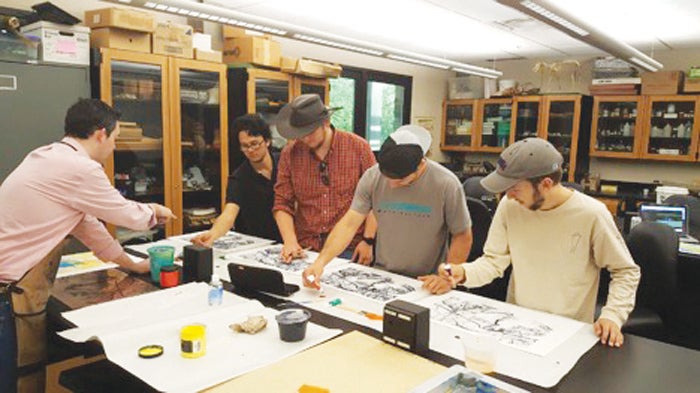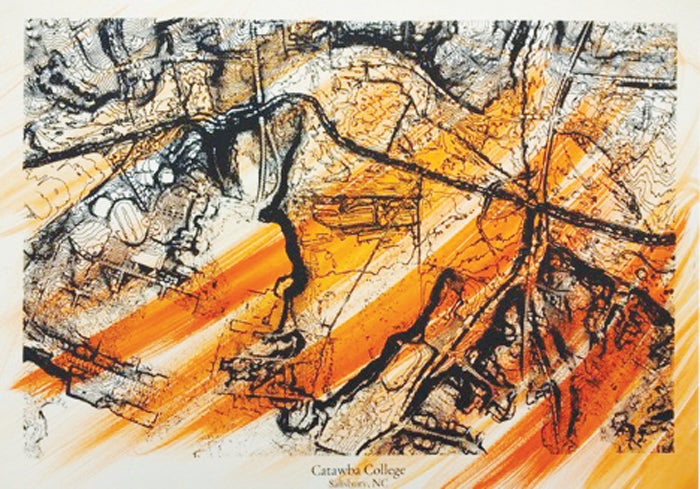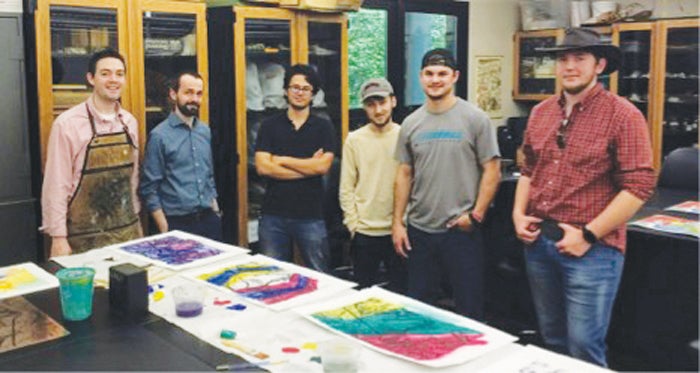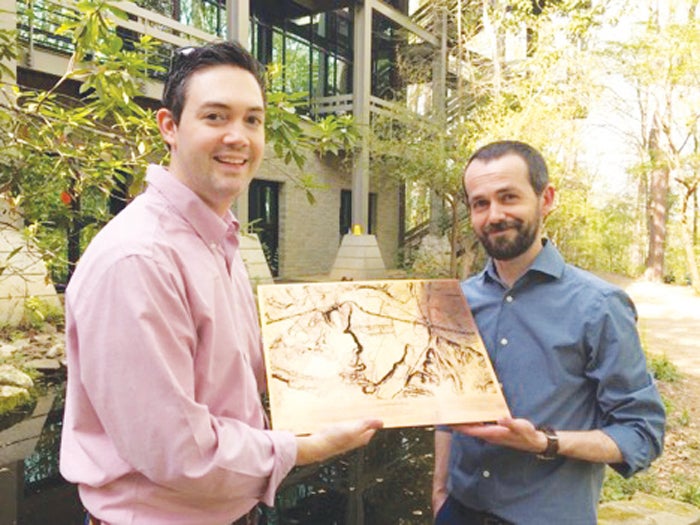Internationally recognized artist visits Catawba College
Published 12:00 am Thursday, May 2, 2019
SALISBURY — Assistant Professor Matthew Forrest of the department of art at Georgia College Milledgeville visited Catawba College on April 11.
Forrest arrived for the culmination of a semester-long collaboration with visiting Assistant Professor Tyler W. Davis of the Catawba department of environment and sustainability. This followed Davis’ visit to Georgia College on March 26 to lead a workshop on technology and its application for art.
Forrest is an internationally recognized artist and printmaker, having shown his work in more than 50 exhibits from Pittsburgh to Los Angeles and around the globe from Portugal to China. He is known for experimentation and has invented sustainable print methods, including nontoxic printmaking techniques taught in textbooks. Forrest also works to make printmaking accessible to students with disabilities in communities across central Georgia, including outreach at the Georgia Academy for the Blind in Macon.
At Catawba College, Forrest’s collaboration with Davis was to explore the bridge between art and science through technology. Davis said he was “interested to see how students view and assign artistic value to the scientific representations of data.”
Forrest demonstrated printmaking to students in Davis’ intermediate geographic information system and field GPS class. During the demonstration, students created two works of art.
The first was a watercolor screen print of the elevation contours around the Catawba campus.
The second piece explored abstract art, as students made a screen print of geometric shapes based on the elevation data within the Fred Stanback Jr. Ecological Preserve.
“It was a gratifying moment when we saw our data in physical print,” said Catawba student Matt Rodriguez.
Student Hunter Griffin said, “Thursday taught me that having a creative mind can change the outlook that you have on a subject. I have never been interested in art, and this experience changed that. The experience brought to light that both science and art can influence one another and help explain each work.”
Student Matt Barsody added that artists and scientists could “both can gain something from each other through this creative process.”
Forrest also created an engraved copper plaque of the Catawba campus and ecological preserve based on a student-created topographic map. The Center for the Environment plans to display the piece of art permanently.
Forrest said he was excited to see the map act as a visual reminder of the valuable connection between art and science.
The partnership proved that their fields share more in common than technology alone, as it proved the natural world inspires scientists and artists alike.
In addition to the plaque, Forrest donated a piece of art to the department that was created using data from Davis’ class.
The intercollegiate experience was made possible by a grant from Georgia College titled New Innovations Within Art and Science Technologies. For more information about the collaboration, contact Davis at twdavis17@catawba.edu.








